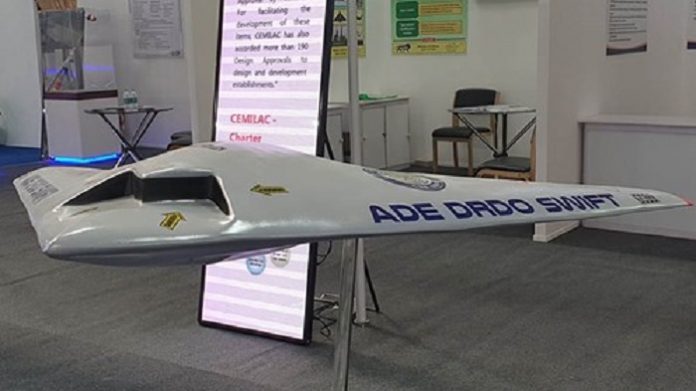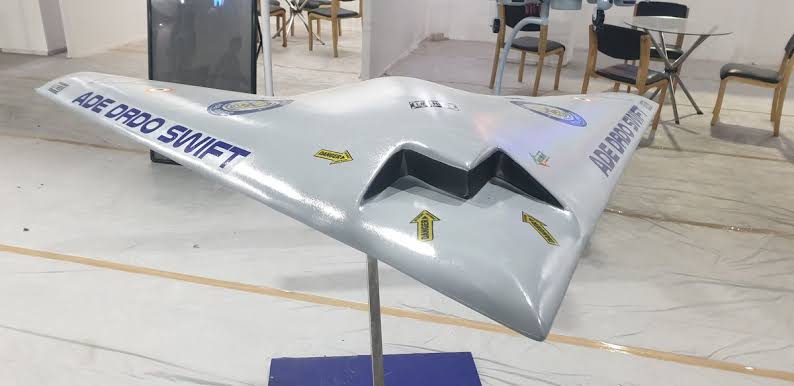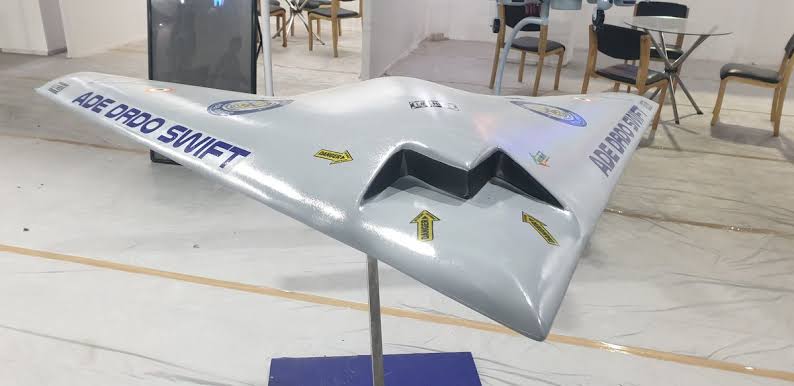Latest Thread
- TECHINT Germany arrests 3 suspected China spies
- Mil Intelligence Military court convicts US sailor of attempted espionage
- UK Is there any British officer or British military personnel here that I can discuss with?
- Article Requirements for the Command and Control of the UK's Ground-Based Air Defence
- NATO Missile Defense Radar(Türkiye)
You are using an out of date browser. It may not display this or other websites correctly.
You should upgrade or use an alternative browser.
You should upgrade or use an alternative browser.
Something odd, how can PTAE-7 power the CATS Warrior if it is made for a single use target drone? Does the upgraded compressor allow this?
And another question, are turbojets engines scalable below a certain size? Could you in theory scale up a 1kn engine to a 3kn engine?
And another question, are turbojets engines scalable below a certain size? Could you in theory scale up a 1kn engine to a 3kn engine?
Something odd, how can PTAE-7 power the CATS Warrior if it is made for a single use target drone? Does the upgraded compressor allow this?
AFAIK, lakshya is designed to be reusable (including the engine)....it has a parachute recovery system in it. Unsure about engine (PTAE-7) MTBO and lifetime in this role though.
After it is launched (rocket boost--->rocket jettison---->turbojet switches on) and achieves the relevant altitude, two actual targets (one under each wing) are unlocked and essentially towed behind the main PTA at some distance...and I think can be jettisoned too depending on target profile need.
These two are what are fired at in most training missions involving the Lakshya, though I suppose the main PTA can also be targeted if needed (at cost to system).
Generally the main PTA needs to survive + be recovered (via parachute system) since it carries a lot of the useful telemetry data regarding the effectiveness of the weapon w.r.t towed targets/decoys.
So PTAE-7 is reusable, it was developed (in its smaller scale) from the know-how and understanding India initially got from the orpheus 703 many examples of which were retired early with the HF-24 Marut
These examples were thus studied/tested extensively in the 80s. Though they were a generation older even at that time they provided some of the basis to take forward....like was done in Kaveri and HTFE-25 (at the mid-larger scales).
Orpheus engines that had lot of lifetime left on them were derated and used on Kiran II trainer too.
Anyway, the (two) towed targets of the lakshya formed the basis of the related Abhyas system which is expendable one-use (very much like a cruise missile) and I suppose uses a one-time-use cheaper gas turbine than lakshya. But that is not a PTAE-7 (maybe a cheaper + smaller version of it, I forgot what its thrust/sizing is).
In any case PTAE-7 will be improved material and tolerance wise for use in CATS.
I would assume it (first variant of it) hits somewhere in the 4 kN thrust range so x2 = 8kN for about ~2 tonne mass of CATS. P/W is thus in region of high subsonic a/c...which is its planned max speed (since no afterburner).
Lot of this is off top of my head,, so I might have gotten some details wrong.
And another question, are turbojets engines scalable below a certain size? Could you in theory scale up a 1kn engine to a 3kn engine?
You can scale an engine to some degree (though not perfectly 3D isotropically most people think when "scaling")...i.e apply the same set of technologies and overall layout to a larger size (with maybe more compressor/turbine stages and modifying requisite hand-off zones like guide vanes.... and other things which do not scale in same linear way).
But there is diminishing returns (in utility of doing this approach compared to starting from relative scratch) past a point (as engine gets larger and larger) especially as the Turbine Inlet Temperature (among other things, but long subject) starts to really increase which needs far more deep design changes in the intrinsic turbine capability to cool itself and have higher resilience to such operating conditions.
It is actually this Turb inlet temp (relative to materials research + frontier fabrication processes we have at hand) that pretty much sets the overall bounds for the current maximum size (or max thrust or converted power for given size) jet engines reach today.
Last edited:
DRDO’s SWiFT UAV Starts Ground Trials
INDIAN DEFENCE RESEARCH WINGBy
ELE Times Research Desk
-
June 23, 2021

SWiFT, 1-ton All Up Weight (AUW) Technological Demonstrator for India’s upcoming Unmanned Stealth Bomber has begun its ground level trials on the first assembled Prototype, that will been involved in series of low, medium, and high-speed taxi testing to ascertain aircraft’s performance and instrumentation from a ground control station to verify the functionality while the vehicle reached accelerated speeds.
If ground test data collected are in the required parameters based on the final test verifications then preparation for the flight testing might be carried out in the next few weeks as per information provided to idrw.org. SWiFT will be powered by a Russian NPO Saturn 36MT turbofan engine, that will be later replaced by GTRE’s Small Turbo Fan Engine (STFE).
India’s Defence Research and Development Organisation (DRDO) had delivered retractable landing gear (RLG) systems for the SWiFT program developed by Combat Vehicles Research and Development Establishment (CVRDE) earlier this year. SWiFT will be used to collect data on the controllability of flying wing configuration and autonomous take-off and landing technology, retractable landing gear system, flying-wing design, and low radar signature data of the aircraft that will be used for further improvements.
India’s Ghatak stealth flying wing combat drone powered by a Dry Kaveri engine generating 46kN of thrust will be ready for flight trials by 2024-25, once most of the technologies are validated on the Scale down SWiFT variant. SWiFT might also go into production as part of the unmanned wingman bomber program separately as per the latest speculations

DRDO’s SWiFT UAV Starts Ground Trials - ELE Times
SWiFT, 1-ton All Up Weight (AUW) Technological Demonstrator for India’s upcoming Unmanned Stealth Bomber has begun its ground level
 www.eletimes.com
www.eletimes.com
SWiFT started trials
Where possible, give a short summary (or some pertinent screencap analysis etc) in English with non-English videos as you post them....so international forum members here can get basic gist of it etc.
EDIT: Forgot to add 140 crore INR is roughly 20 million USD.
Last edited:
I saw that piece , swift has completed taxi trials .
Flight trials will be done in due time almost a year , and final ghatak ucav will go into prototype phase , engine will be certified by 2024 ,so we will see it flight with kaveri in 2024 .
This program will give kaveri a direction
UAV SWIFT Completes its First Primary Trials
13 hours ago Shantanu K. Bansal
Source: Idrw
UAV SWiFT 1-ton All Up Weight (AUW) Technological Demonstrator for India’s upcoming Unmanned Stealth Bomber has completed series of low-speed taxi trials and high-speed taxi trials and has been cleared for the first flight that likely will take place by end of this year.
It has been told that the DRDO test personnel monitored the aircraft’s performance and instrumentation from a ground control station to verify the functionality while the vehicle reached accelerated speeds over the last three months ground testing phase where SWiFT underwent low, medium, and high-speed taxi testing.
SWiFT has been powered by a Russian NPO Saturn 36MT turbofan engine, that will be later replaced by GTRE’s Small Turbo Fan Engine (STFE). SWiFT will be used to collect data on the controllability of flying wing configuration and autonomous take-off and landing technology, retractable landing gear system, flying-wing design, and low radar signature data of the aircraft that will be used for further improvements.
Based on the conclusion of the SWiFT Technological Demonstrator program in the next 2-3 years, DRDO later plans to manufacture a full-scale prototype and test the Ghatak stealth flying wing combat drone powered by a Dry Kaveri engine generating 46kN of thrust will be ready for flight trials by 2025-26.

UAV SWIFT Completes its First Primary Trials - INDIAN AEROSPACE DEFENCE NEWS
Source: Idrw UAV SWiFT 1-ton All Up Weight (AUW) Technological Demonstrator for India’s upcoming Unmanned...
 iadnews.in
iadnews.in
Ghatak unmanned combat aerial vehicle would have fluidic thrust vectoring
A tender for manufacturing of full scaled ghatak prototype was issued recently with a timeline of t0+t24 months.
Manik which can power SWiFT
And dry kaveri which would power ghatak UCAV.
I got the image of swift but can't post it because it's classified.
Last edited:
HAL set to get approval for $95 million funding to develop High-Altitude Pseudo Satellite (HAPS) Drone
The drone in question is the Infinity, part of the HAL-Newspace program for Combat Air Teaming System (CATS). The pseudo-satellite or HAPS is meant to be solar-powered & designed for extremely long endurance (anywhere between several days to several months), enabling it to keep constant surveillance over a particular region.
The CATS Infinity is similar in scope to the Airbus Zephyr program.


HAL project to build pseudo satellite set to get approval for govt funds: Official
At present, it is a self-financed project to build HAPS as a part of a drone warfare programme for the defence forces.
Quoting from the article:
“We will get the approval sometime in October. First there will be a scaled prototype of about 70-feet wing span. The initial prototype may cost less than Rs 50 crore. It will take a minimum of 3-4 years to develop HAPS. We are already working on its design. Moreover, funds will be utilised over a long period of time,” an official working closely with the project said.
The project is being implemented by HAL in collaboration with a Bengaluru-based start-up and the National Aerospace Laboratories (NAL).
“I can confirm that we are far ahead in terms of development of HAPS. We have started this project as part of our unmanned drone warfare programme called Combined Air Teaming System (CATS. Soon an institutional prototype will be ready. The entire development of HAPS will take a few years. The initial investment which we required was Rs 700 crore, but this will be spent over the years,” R Madhavan said.
HAPS will weigh more than 500 kg and will utilise solar energy. It will be able to fly at a height of 70,000 feet and even stay there for months.
M
Manomed
Guest
shit happensHere is the story so far :
We were making a big drone with 2 Russian NPO-Saturn 36MT turboprop engines :
View attachment 1810
But we didn't like the engines, so we thought lets make our own. And so we did :
View attachment 1813
But it was a diesel engine, a turbocharged inline 4 diesel engine that also runs on ATF. It was pretty powerful too. Producing 180hp at 11,000 ft, there would be 2 of them. So 360hp at 11,000 ft. This combined with an wingspan of over 20 m gives it good range and endurance.
The targeted range of the drone was ~3000 kms, service ceiling of 50000 ft & endurance of 24–30 hours. Pretty good huh ? Just one tiny little problem.
View attachment 1816
The drone was designed from ground up with a turboprop engine and now we are putting in a turbocharged diesel. The airframe needed to be re-designed, a very long & tedious task. Many people began questioning the point of it. How big is the change ? Will it really effect anything ? Why can't we just fly the damn thing ?
DRDO decided to bite the bullet and go for a flight. Thinking what could go wrong ? Its not like it wont fly right ? And it flew YAY !!
View attachment 1812
So they continued doing flight tests, adding new layers of complexity with every flight. Soon the drone would start flying longer distances using SATCOMs and not line of sight comms. Then long range EO sensors came on, then came the synthetic aperture radars that will enable it to see through the clouds. There was no stopping it.
There was flights every week, then a few months of flying later this happened :
View attachment 1815
View attachment 1814
At the end of the crash DRDO confirmed that the aerodynamic instabilities introduced with the change of engine, made it more susceptible to foul weather induced crashes. The crash happened in a coastal flight when a sudden strong gust of wind came from the sea. The drone spun out and fell flat on its belly.
They have now decided to re-design the airframe, this was in 2019. It will take a long time, a few years at least to see another flight. They are considering a pusher-propeller configuration, replacing the current pull-propeller. But it remains to be seen if the design changes will be that comprehensive. The next version of the drone will likely be armed. I mean they are making missiles for it already.
HAL set to get approval for $95 million funding to develop High-Altitude Pseudo Satellite (HAPS) DroneThe drone in question is the Infinity, part of the HAL-Newspace program for Combat Air Teaming System (CATS). The pseudo-satellite or HAPS is meant to be solar-powered & designed for extremely long endurance (anywhere between several days to several months), enabling it to keep constant surveillance over a particular region.
The CATS Infinity is similar in scope to the Airbus Zephyr program.


HAL project to build pseudo satellite set to get approval for govt funds: Official
At present, it is a self-financed project to build HAPS as a part of a drone warfare programme for the defence forces.indianexpress.com
Quoting from the article:
“We will get the approval sometime in October. First there will be a scaled prototype of about 70-feet wing span. The initial prototype may cost less than Rs 50 crore. It will take a minimum of 3-4 years to develop HAPS. We are already working on its design. Moreover, funds will be utilised over a long period of time,” an official working closely with the project said.
The project is being implemented by HAL in collaboration with a Bengaluru-based start-up and the National Aerospace Laboratories (NAL).
“I can confirm that we are far ahead in terms of development of HAPS. We have started this project as part of our unmanned drone warfare programme called Combined Air Teaming System (CATS. Soon an institutional prototype will be ready. The entire development of HAPS will take a few years. The initial investment which we required was Rs 700 crore, but this will be spent over the years,” R Madhavan said.
HAPS will weigh more than 500 kg and will utilise solar energy. It will be able to fly at a height of 70,000 feet and even stay there for months.
Here comes a low cost capability for surveillance .
Months means a lot , lot of operational benefits
Indeed.shit happens
The electric engine for the CATS Infinity/HAPS drone has been under wind tunnel testing.HAL set to get approval for $95 million funding to develop High-Altitude Pseudo Satellite (HAPS) DroneThe drone in question is the Infinity, part of the HAL-Newspace program for Combat Air Teaming System (CATS). The pseudo-satellite or HAPS is meant to be solar-powered & designed for extremely long endurance (anywhere between several days to several months), enabling it to keep constant surveillance over a particular region.
The CATS Infinity is similar in scope to the Airbus Zephyr program.


HAL project to build pseudo satellite set to get approval for govt funds: Official
At present, it is a self-financed project to build HAPS as a part of a drone warfare programme for the defence forces.indianexpress.com
Quoting from the article:
“We will get the approval sometime in October. First there will be a scaled prototype of about 70-feet wing span. The initial prototype may cost less than Rs 50 crore. It will take a minimum of 3-4 years to develop HAPS. We are already working on its design. Moreover, funds will be utilised over a long period of time,” an official working closely with the project said.
The project is being implemented by HAL in collaboration with a Bengaluru-based start-up and the National Aerospace Laboratories (NAL).
“I can confirm that we are far ahead in terms of development of HAPS. We have started this project as part of our unmanned drone warfare programme called Combined Air Teaming System (CATS. Soon an institutional prototype will be ready. The entire development of HAPS will take a few years. The initial investment which we required was Rs 700 crore, but this will be spent over the years,” R Madhavan said.
HAPS will weigh more than 500 kg and will utilise solar energy. It will be able to fly at a height of 70,000 feet and even stay there for months.
This thread has a pretty good collection of info about Indian drones. Let me add a bit to it:
A video of the DRDO/SDE Skydock that will be used to re-charge, dock & launch VTVL drone swarms.
The Army recently showcased VTVL swarm drones:
IA is funding the development/testing of a new heavy cargo drone.
New Israeli drone being acquired:
Some old news:
Underwater & surface drones:
Matsya series of autonomous underwater vehicle (AUV) by IIT-B:
Matsya-6:

CAIR developed drones

Kalyani Defence Systems ECARS:



SDE is developing an unmanned/optionally manned surface boat:



There are a lot more. But that's all for today, got some stuff to do. I will continue this some other time.
Underwater & surface drones:
Matsya series of autonomous underwater vehicle (AUV) by IIT-B:
Matsya-6:
CAIR developed drones
Kalyani Defence Systems ECARS:
SDE is developing an unmanned/optionally manned surface boat:
There are a lot more. But that's all for today, got some stuff to do. I will continue this some other time.
Wasn't the sky Stryker news unconfirmedIndeed.
The electric engine for the CATS Infinity/HAPS drone has been under wind tunnel testing.
View attachment 31788
This thread has a pretty good collection of info about Indian drones. Let me add a bit to it:
A video of the DRDO/SDE Skydock that will be used to re-charge, dock & launch VTVL drone swarms.
The Army recently showcased VTVL swarm drones:
IA is funding the development/testing of a new heavy cargo drone.
New Israeli drone being acquired:
Was it unconfirmed ? I've read it at multiple places. So I thought it was true.Wasn't the sky Stryker news unconfirmed
Company seems to be manufacturing partner of elbiet
Was it unconfirmed ? I've read it at multiple places. So I thought it was true.
Latest posts
-
-
Indonesia Indonesian Navy, Tentara Nasional Indonesia-Angkatan Laut (TNI-AL)
- Latest: Lordimperator
-




